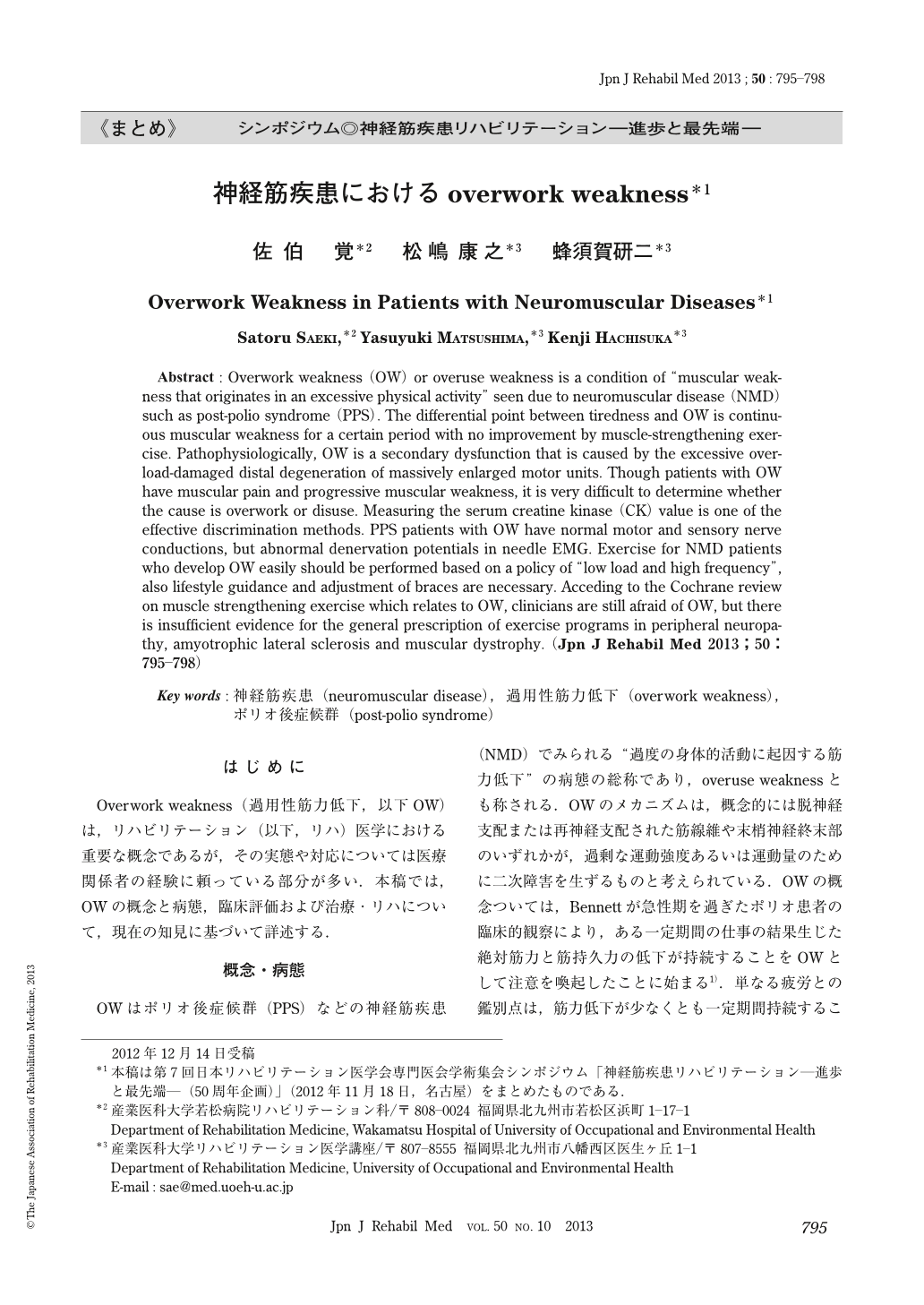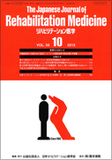Japanese
English
- 販売していません
- Abstract 文献概要
- 1ページ目 Look Inside
- 参考文献 Reference
はじめに
Overwork weakness(過用性筋力低下,以下OW)は,リハビリテーション(以下,リハ)医学における重要な概念であるが,その実態や対応については医療関係者の経験に頼っている部分が多い.本稿では,OWの概念と病態,臨床評価および治療・リハについて,現在の知見に基づいて詳述する.
Abstract : Overwork weakness (OW) or overuse weakness is a condition of “muscular weakness that originates in an excessive physical activity” seen due to neuromuscular disease (NMD) such as post-polio syndrome (PPS). The differential point between tiredness and OW is continuous muscular weakness for a certain period with no improvement by muscle-strengthening exercise. Pathophysiologically, OW is a secondary dysfunction that is caused by the excessive overload-damaged distal degeneration of massively enlarged motor units. Though patients with OW have muscular pain and progressive muscular weakness, it is very difficult to determine whether the cause is overwork or disuse. Measuring the serum creatine kinase (CK) value is one of the effective discrimination methods. PPS patients with OW have normal motor and sensory nerve conductions, but abnormal denervation potentials in needle EMG. Exercise for NMD patients who develop OW easily should be performed based on a policy of “low load and high frequency”, also lifestyle guidance and adjustment of braces are necessary. Acceding to the Cochrane review on muscle strengthening exercise which relates to OW, clinicians are still afraid of OW, but there is insufficient evidence for the general prescription of exercise programs in peripheral neuropathy, amyotrophic lateral sclerosis and muscular dystrophy.

Copyright © 2013, The Japanese Association of Rehabilitation Medicine. All rights reserved.


